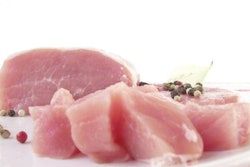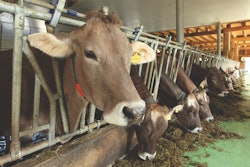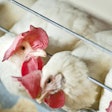
It might be possible to save a bit of the future by thinking outside the proverbial box.
The world of commerce is changing, and globalization is being replaced by alliances and bilateral agreements.
One could argue that George Orwell’s novel “1984” is becoming the new reality with alarming speed and this also affects the animal industry. The additives industry, being one of the more lucrative branches of the animal nutrition business, is always looking into the future, as it must, because the value of its products is added; that is, by definition these products are not part of the basic animal feed but they certainly may add some value to it.
As we change the way we trade and consequently feed our animals, the same applies to the additives we will be using, either by choice or by force. So, let us examine some Orwellian versions of additives that may be successful in the near future, always taking into account the present.
Gut health additives
It is clear that many parties of interest no longer want medicinal drugs to be used in animal feeds, and in some cases not even when the animals get sick. As such, and because we need to continue protecting the health of intensively raised animals, we must now look for alternatives that cannot be associated with human medicinal products.
“Natural” products will become even more fashionable in the animal health industry, and by that I imply products that originate in one form or the other from plants and not from ores – although both are “natural.” The current array of plant-derived compounds is negligible compared with the vast weaponry available in plants (and yeasts and microbes). We are limited only by our imagination and lack of funding.
Brand identity additives
Cheap animal products will continue to dominate the major animal protein markets, but for the rest, animal products will require a special brand identity. For example, there is “table” wine sold for a few dollars a bottle and epicurean wine sold for considerably more. Such difference in animal products can be derived from the type of additives they are fed.
For example, we can refer to omega-3 fatty acid-enriched eggs that are way more expensive, but if they do what they claim on the label, our immune system must be boosted when we consume them. Could vitamin-enriched eggs be the next thing, or something else that we need to think about now? Has anyone tasted pork fed with olive oil yet? I did.
Politically correct additives
Here, we must think in negative terms. It is not what we can or should use, but what we need to avoid. Political or rather politically enforced trade barriers will continue to be raised. Examples range from antibiotic-free feeds to ractopamine-free pork to hormone-free beef to non-GMO-fed animals.
As we face a global trade environment and a globally informed local consumer populace, we will be forced to abandon certain practices, and whether we do this proactively or reactively may signify the difference between staying in business or staying profitable.
Feed efficiency additives
Animal performance cannot continue to exceed current genetic potential by a vast difference unless we allow genetically modified (or gene edited) animals, something highly unlikely to happen. So, as genetic progress diminishes its pace, the heavy weight of progress will fall upon feed efficiency.
In such a low-margin business as the animal industry, even a 2-3% improvement in feed efficiency is good enough, and if we look at feed digestibility tables, we can see that overall dry matter digestibility hardly exceeds 90% overall. So, small pushes upward will be welcome, especially if they are accomplished without increasing overall production cost.
Byproduct additives
With alternative proteins trying to replace real meat proteins, the competition for plant proteins will intensify, implying they will become more expensive. When we start eating soybean meal, after we reshape it as “meat,” animals will need to find another source of protein to make real meat. Thus, overlooked and obviously less efficient byproducts will have to enter again into animal feed formulas, and these will need an efficiency boost. Otherwise, the cost of production will increase, making imitation meat products appear less expensive, and thus more interesting for the cost-minded consumer.
We will need to invent additives that will enable us to use more of those byproducts that today find limited use, not only because they contain less protein per se or less digestible protein, but also more or different anti-nutritional factors (the great problem of most plant-based protein sources.)
Organic market additives
Finally, organic – whatever that term may mean to each market – will not go away. And from being a niche market today, it will grow to be embraced by, if not the majority global population, at least those of developed (rich) countries and especially large urban centers where consumers are far removed from agriculture and easily swayed one way or the other about it. So, there will be an increasing market for organic additives, that is additives that can be used in organic feeds.
A powder of cinnamon for example may be more acceptable as organic compared with a synthetic form that provides the same active substance. This is just an example, and not a recommendation, to illustrate how we need to think if the feed additives industry is to penetrate this market.
The animal feed industry is changing, as it has always been doing, although the pace now is accelerating to the point that research and development can no longer keep pace. The additives industry is, by nature, a shifting one and must think even faster and smarter than their adversaries if they want to remain in business.
The immediate future is less predictable than it was five years ago, and it will become even less so as time moves on. Flexibility is no longer enough for additives to remain profitable. Innovation has become a stale word and means little when we see the same story again and again.
Industry leaders will transform the industry as they did in the past or perish along with their followers. Additives as an innovation might be a recent thing (a few decades old) but if one studies the history of animal nutrition, one will find many such innovations that failed to keep pace and got lost in time. Who remembers what feed tankage was? It was as common in feed formulas of the 1950s, just as phytase is today. Will we still remember phytase 70 years on if we discover new vast rock phosphate mines?













